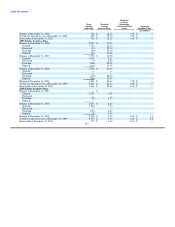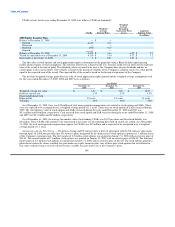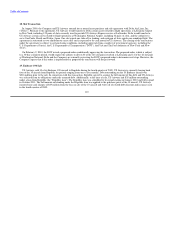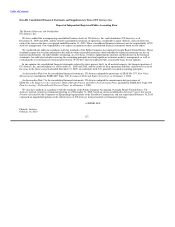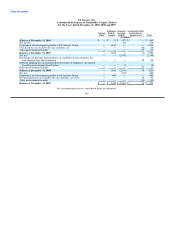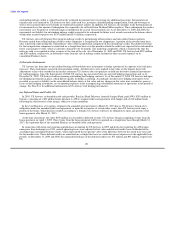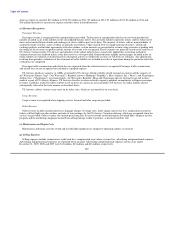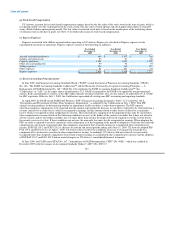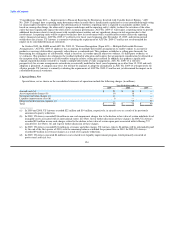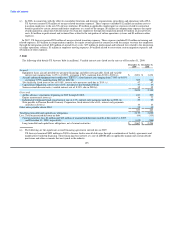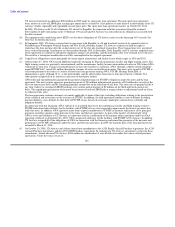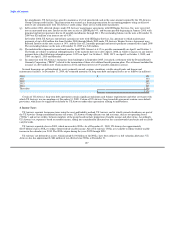US Airways 2009 Annual Report Download - page 119
Download and view the complete annual report
Please find page 119 of the 2009 US Airways annual report below. You can navigate through the pages in the report by either clicking on the pages listed below, or by using the keyword search tool below to find specific information within the annual report.
Table of Contents
US Airways, Inc.
Notes to Consolidated Financial Statements
1. Basis of Presentation and Summary of Significant Accounting Policies
(a) Nature of Operations and Operating Environment
US Airways, Inc. ("US Airways") is a Delaware corporation whose primary business activity is the operation of a major network air
carrier. US Airways is a wholly owned subsidiary of US Airways Group, Inc. ("US Airways Group"), which owns all of US Airways'
outstanding common stock, par value $1 per share.
On September 26, 2007, as part of the integration efforts following the merger, America West Airlines, Inc. ("AWA") surrendered its
Federal Aviation Administration ("FAA") operating certificate. As a result, all mainline airline operations are now being conducted under
US Airways' FAA operating certificate. In connection with the combination of all mainline airline operations under one FAA operating
certificate, US Airways Group contributed 100% of its equity interest in America West Holdings Corporation ("America West
Holdings"), the parent company of AWA, to US Airways. As a result, America West Holdings and AWA became wholly owned
subsidiaries of US Airways. In addition, AWA transferred substantially all of its assets and liabilities to US Airways. All off-balance
sheet commitments of AWA were also transferred to US Airways.
US Airways operates the fifth largest airline in the United States as measured by domestic revenue passenger miles ("RPMs") and
available seat miles ("ASMs"). US Airways has hubs in Charlotte, Philadelphia and Phoenix and a focus city at Ronald Reagan
Washington National Airport. US Airways offers scheduled passenger service on more than 3,000 flights daily to more than 190
communities in the United States, Canada, Mexico, Europe, the Middle East, the Caribbean, Central and South America. US Airways
also has an established East Coast route network, including the US Airways Shuttle service, with a substantial presence at Washington
National Airport. US Airways had approximately 51 million passengers boarding its mainline flights in 2009. During 2009, US Airways'
mainline operation provided regularly scheduled service or seasonal service at 138 airports, while the US Airways Express network
served 152 airports in the United States, Canada and Mexico, including 75 airports also served by the mainline operation. During 2009,
US Airways Express air carriers had approximately 27 million passengers boarding their planes. As of December 31, 2009, US Airways
operated 349 mainline jets and is supported by US Airways Group's regional airline subsidiaries and affiliates operating as US Airways
Express either under capacity purchase or prorate agreements, which operated approximately 236 regional jets and 60 turboprops.
As of December 31, 2009, US Airways employed approximately 31,300 active full-time equivalent employees. Approximately 86% of
US Airways' employees are covered by collective bargaining agreements with various labor unions. US Airways' pilots and flight
attendants are currently working under the terms of their respective US Airways or AWA collective bargaining agreements, as modified
by transition agreements reached in connection with the merger.
(b) Basis of Presentation
The transfer of assets between US Airways and AWA described above constitutes a transfer of assets between entities under common
control and was accounted for in a manner similar to the pooling of interests method of accounting. Under this method, the carrying
amount of net assets recognized in the balance sheets of each combining entity are carried forward to the balance sheet of the combined
entity, and no other assets or liabilities are recognized as a result of the contribution of shares. The accompanying consolidated financial
statements in this annual report on Form 10-K are presented as though the transfer had occurred at the time of US Airways' emergence
from bankruptcy in September 2005.
The accompanying consolidated financial statements include the accounts of US Airways and its wholly owned subsidiaries. US
Airways Group has the ability to move funds freely between its operating subsidiaries to support operations. These transfers are
recognized as intercompany transactions. In the accompanying consolidated statements of cash flows, these intercompany transactions
are designated as payables to related parties, net and are classified as operating or financing activities depending upon the nature of the
transaction. All significant
117


